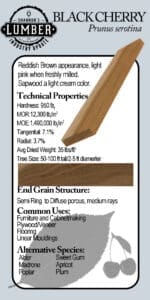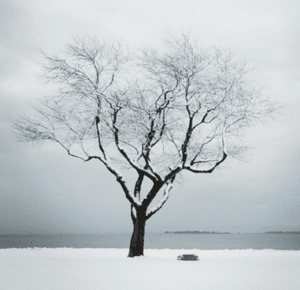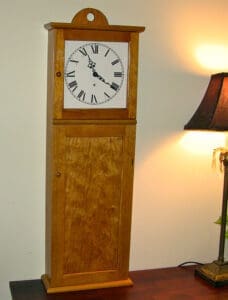Wood in Airplanes through the Years
This time I discuss the featured species of the month: Black Cherry and then dive into the deep topic of wood in the aviation industry. My guest Alex LaFavre is a pilot and works in the aviation industry and he shares all the fun bits about how wood has been used in airplanes through the nearly 125 years since the Wright Brothers took flight on a mostly Spruce airplane.
Support the show at www.patreon.com/lumberupdate. At the Walnut tier you will receive a collectible sticker about the featured species of the month! Collect them all and start now as this month is our first one.
Industry News
Feedback
- Coastal or California Live Oak is Quercus agrifolia
Featured Species: Black Cherry
One of my favorite species to work. I've built quite a bit of furniture from it and love the smooth texture without the crazy hardness. A good mix of density and low hardness for hand tool work. Often prone to "blotchy" finish which could be spun as figure. Look at the panel in the door of the clock image below for a good look at what that "blotch" can look like.







I really do enjoy the podcast. Really. At times however the things you say just make me laugh and wonder about the accuracy of everything else. In this episode it came when Black Cherry – Prunus Serotina was said to be the tree that is grown for it’s cherries. The thought of going 80 feet up to gather the pea sized fruit… maybe squirrels do. From the first paragraph on wikipedia: “Despite being called black cherry, it is not very closely related to the commonly cultivated cherries such as sweet cherry (P. avium), sour cherry (P. cerasus) and Japanese flowering cherries (P. serrulata, P. speciosa, P. sargentii, P. incisa, etc.) which belong to Prunus subg. Cerasus. Instead, P. serotina belongs to Prunus subg. Padus, a subgenus also including Eurasian bird cherry (P. padus) and chokecherry (P. virginiana).[7][8][9] ”
I really do enjoy the podcast and will continue to listen.
I appreciate your comments. Remember I’m talking about the wood here. Yes, no one will be growing or harvesting cherries from the Black Cherry tree you are correct. But from a lumber perspective and not from a fruit bearing or even tree morphology perspective the Bird Cherry, Chokecherry, the sterile Japanese Cherry are very similar. Slightly different working properties and sizes but where the blade meets the wood you will find them closely related. For that matter many of the other fruitwoods in the Prunus genus or even in the Rose family will have similar properties and appearances. Certainly harnesses will vary but the similar porosities will all feel related and from a woodworking composition perspective you may even have trouble telling some of the species apart.
But again having built many pieces of furniture from Black Cherry and Chokecherry (felled and sawn myself) as well as a number of pieces turned and cabinets from Japanese Cherry, several boxes made from Apricot, Apple, Plum, etc I can verify everything I am saying above from a woodworking perspective.
I will endeavor to make that point clearer as I am most definitely not a botanist nor a forester and I’m speaking from the perspective of a woodworker.
I saw a video from Xyla Foxlin a few day ago, in which she build a wooden propeller together with Culver Props at their facility. It is quite an interesting process and the showed an impressive copying skill saw, which carved out the twisted shape of the propeller.
Best wishes from Germany